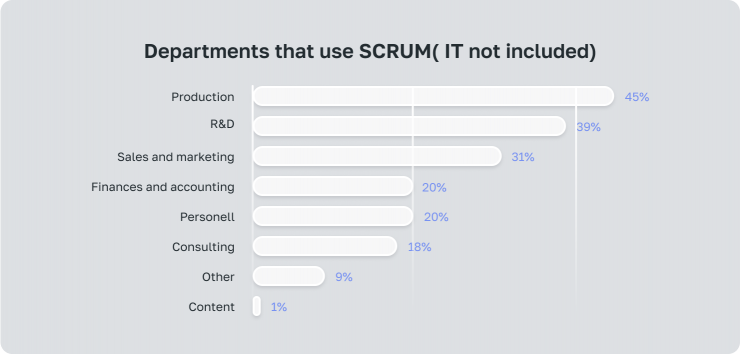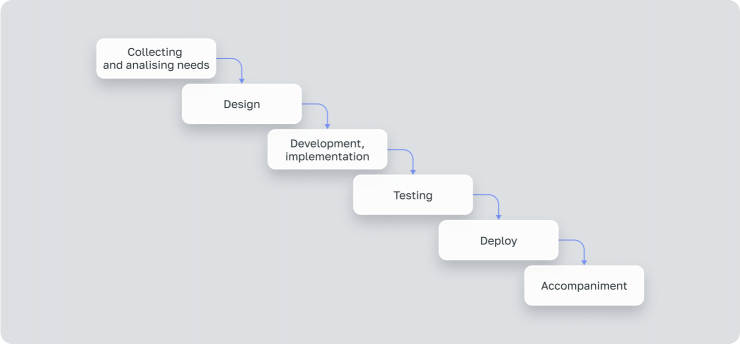How Scrum Was Developed: Origins and Application of the Methodology
Scrum is an agile development methodology with a unique role distribution within the team and a distinctive organization of iterations. Scrum, like other agile project management methods, emphasizes a team approach, short iterations, and continuous improvement during work. These principles are realized through a set of specific roles, rules, processes, and tools, allowing teams to produce products twice as fast.
In Scrum teams, the key roles are the Scrum master and product owner, iterations begin with planning where team members “play” planning poker, and end with a demo and retrospective.
The Scrum methodology was created by Americans Jeff Sutherland, a researcher and business consultant, and Ken Schwaber, a practicing programmer, in 1993. In 1995, the authors officially presented their approach at a scientific conference of the Association for Computing Machinery in Austin, Texas.
The co-authors’ idea was novel: they borrowed both the concept and the name from the work of Japanese management researchers Takeuchi and Nonaka, “The New Product Development Game”, published in 1986. Japanese manufacturers were already using approaches that formed the basis of Scrum. The methodology’s name comes from rugby, where “scrum” – a play – highlights the importance of teamwork for victory on the field.
Application of Scrum in IT and Beyond
Scrum was first applied in companies producing software. The first project managed by Sutherland before the official presentation of Scrum was developing software for an ATM network (1983). Programmers in IT companies and departments remain the main users of Scrum. However, the methodology’s creator insists that Scrum can be used to solve any task, citing examples in manufacturing, construction, education, politics, and even household chores like general cleaning or organizing events.
According to the 2016 Scrum Alliance report, 21% of projects completed using Scrum were unrelated to IT. Various departments successfully use Scrum:

Scrum vs. Agile vs. Waterfall
Scrum belongs to the group of agile methodologies. Agile is not a separate methodology but a development philosophy. Its main principles are listed in the “Manifesto for Agile Software Development” (2001), highlighting team significance, product focus, process transparency, continuous improvement, and quick results.
Scrum is one of the agile frameworks, a formalized methodology for project work. Other agile methodologies include XP, Crystal, Kanban, Lean, Rapid Application Development, Scrumban, etc. So, Scrum is agile, but agile isn’t only Scrum.
To visualize the differences and similarities between Scrum and Agile:
Scrum | Agile | |
Philosophy | - | + |
Methodology | + | - |
Rituals | + | - |
Roles | + | - |
Artifacts* | + | - |
Transparency | + | + |
Short Iterations | + | + |
Frequent Releases | + | + |
Change Management | + | + |
| Continuous Improvement | + | + |
*Artifacts in Scrum are objects created by the team during the project. They include the product backlog, sprint backlog, and product increment – a working piece of functionality demonstrated at the sprint’s end.
Agile methodologies contrast with the waterfall model, widely used by development teams in the 90s. This model involves sequential execution, starting each phase only after the previous one is complete.

How to Work According to Scrum
Roles in Scrum:
- Scrum Team: The core of Scrum is the team – a cohesive group of professionals. Scrum teams are autonomous, deciding how to complete tasks themselves.
- Scrum Master: The formal leader of the Scrum team, ensuring proper methodology application and team morale. They are responsible for the how of the work.
- Product Owner: Responsible for the product’s functionality. Manages the project backlog and communicates with the customer.
- Customer: The project’s end-user or client, either external or internal (e.g., the sales department requesting a CRM system).
Regular Scrum Meetings in Worksection
- Planning: The first meeting starts the sprint. The team, with the Scrum master and product owner, selects tasks from the top of the backlog to complete.
- Daily Stand-Up: Every day at the same time, team members discuss the work’s progress, answering:
— What did I do yesterday to help the team achieve its goal?
What will I do today?
What impeded my work? - Sprint Review: When the sprint ends, a demo of the completed functionality is shown to the client.
- Retrospective: The team discusses the completed tasks, the problems faced, and ways to improve.
Algorithm: What Comes Next?
- Choose a product owner to clearly define the goals.
- Form a Scrum team.
- Assign a Scrum master.
- Create a project backlog listing all potential tasks.
- Estimate backlog tasks using relative values (e.g., Fibonacci numbers).
- Plan the sprint, selecting tasks and assigning them.
- Set up a Scrum board divided into “To Do,” “In Progress,” and “Done.”
- Conduct daily stand-ups.
- At the sprint’s end, hold a review and retrospective.
- Start the next sprint with planning.
What to Read to Understand Scrum Better
- Scrum Guide (Ken Schwaber, Jeff Sutherland)
- Scrum: The Art of Doing Twice the Work in Half the Time (Jeff Sutherland)
- Agile Manifesto for Software Development
Advantages and Disadvantages of Scrum in IT
Advantages:
- Transparency: Open information exchange and collaboration.
- Team Autonomy: Teams decide how to work, motivating freedom and responsibility.
- Risk Minimization: Quickly responding to project changes.
Disadvantages:
- Not suitable for projects with vague end-product requirements.
- Difficult to apply in large-scale projects without modifications.